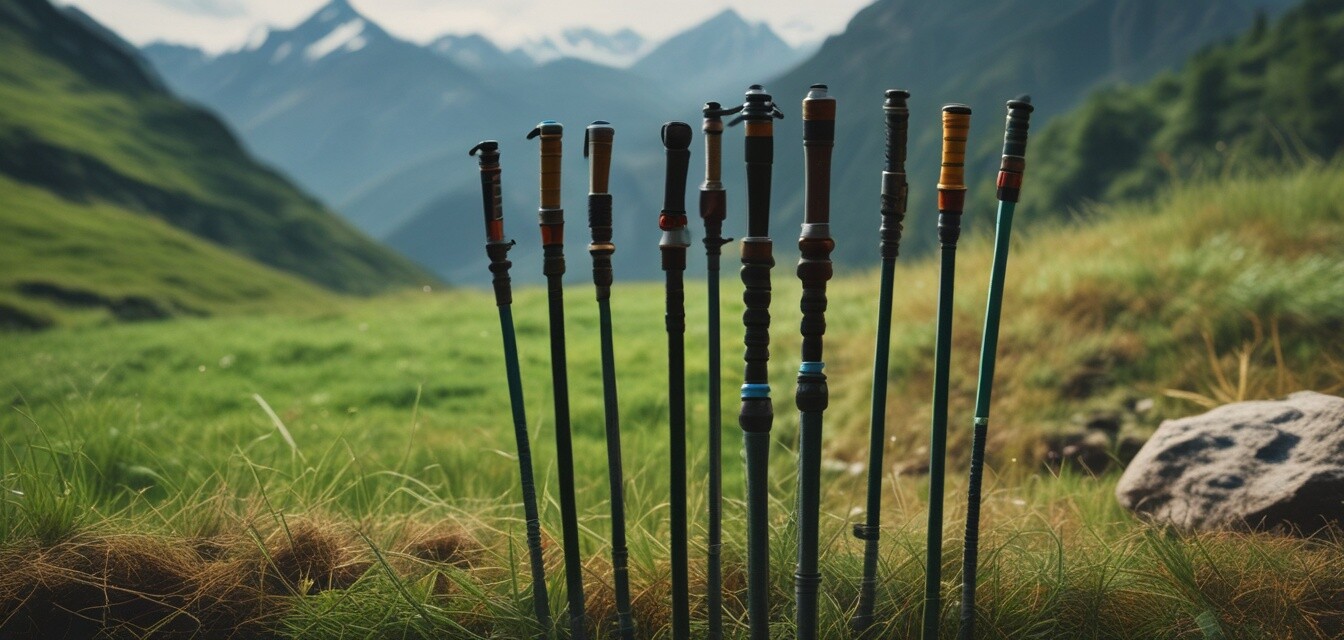
As an Amazon Associate, I earn from any qualifying purchases, at No Extra Cost to You.
What to look for in a quality trekking pole
Key Takeaways
- Focus on weight while selecting trekking poles; a lighter pole enhances mobility.
- Durability is crucial; choose materials that can withstand rugged terrains.
- Adjustability allows personalized height settings for comfort and balance.
- Look for added features such as grips and straps for improved handling.
- Consider your specific needs based on terrain or conditions you typically encounter.
Trekking poles are essential tools for outdoor enthusiasts, providing stability, support, and comfort during long hikes. As your experience grows, understanding what features contribute to a quality trekking pole can significantly enhance your backpacking adventures. This guide will help you navigate the important aspects to look for when choosing the right trekking poles for your needs.
1. Weight of trekking poles
When selecting a trekking pole, one of the first factors to consider is its weight. A lightweight pole can enhance your overall comfort and mobility while trekking. Heavier poles may offer additional strength but can lead to fatigue over longer distances.
Material considerations
| Material | Weight | Durability |
|---|---|---|
| Aluminum | Heavier | Very durable, resistant to bending and breaking |
| Carbon Fiber | Lighter | Very strong but can break under extreme stress |
2. Durability matters
Your trekking poles should withstand various conditions and terrains. The material, construction, and overall design play critical roles in durability.
Testing durability
When evaluating durability, consider the following:
- Check the pole's construction; solid constructions are more reliable.
- Assess the materials for robustness against heavy use.
- Read user reviews that specifically mention the pole's performance over time.
3. Adjustability for various terrains
Having an adjustable pole is beneficial for different hiking conditions and user preferences. Adjustability helps cater to diverse terrains, inclines, and personal comfort levels.
Types of adjustments
Look for poles that offer:
- Telescopic adjustments: Typically have multiple sections you can extend or retract.
- Flick locks: Provide a secure and easily adjustable mechanism.
- Twist locks: Enable quick adjustment but might need more maintenance.
4. Grip and strap options
Comfort during use is a priority, and both the grip and the strap of the trekking pole contribute greatly to this aspect.
Grip materials
| Grip Material | Comfort Level | Wet Weather Performance |
|---|---|---|
| Foam | Good | Absorbs moisture, maintains grip |
| Rubber | Excellent | Can slip when wet, but cushions well |
5. Price range and value
Finally, consider the price range of trekking poles and the value they offer. While more expensive poles often provide better materials and features, there are plenty of budget-friendly options that can still deliver reliable performance.
Trekking pole price guide
- Entry-level: $30 - $60
- Mid-range: $60 - $120
- High-end: $120 and above
Conclusion
Choosing a quality trekking pole involves considering weight, durability, adjustability, grip comfort, and price. By understanding these key elements, you can select a pole tailored to your specific needs, enhancing your backpacking experience. Remember, the right trekking pole can make a significant difference on your outdoor adventures.
Tips for beginners
- Start with adjustable poles to find your preferred height.
- Experiment with different grip materials to see what feels best in your hand.
- Practice using your poles on flat ground before trying steep inclines.
- Check local trails to get an idea of the terrain you will face to find suitable pole features.
Pros
- Improves stability on uneven terrains.
- Reduces strain on joints during climbs and descents.
- Enhances overall hiking experience.
Cons
- Can add extra weight to your pack.
- May require adjustment time for new users.
- Can be misused if not properly understood.
For more hiking and backpacking advice, explore our Buying Guides for essential gear information, or check out Backpacks to find the perfect carry-on for your next adventure. Happy trekking!